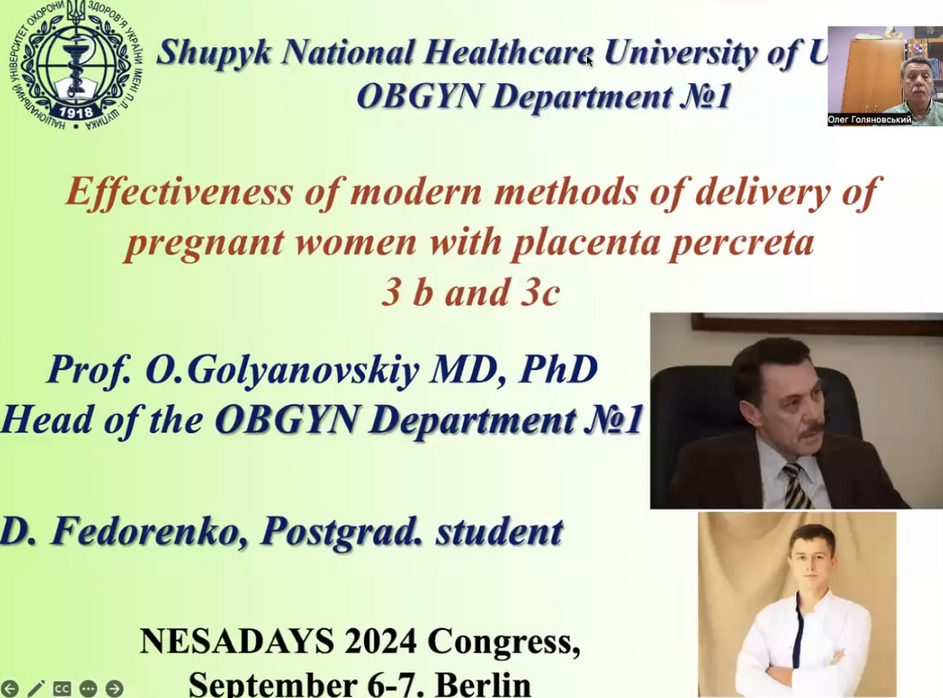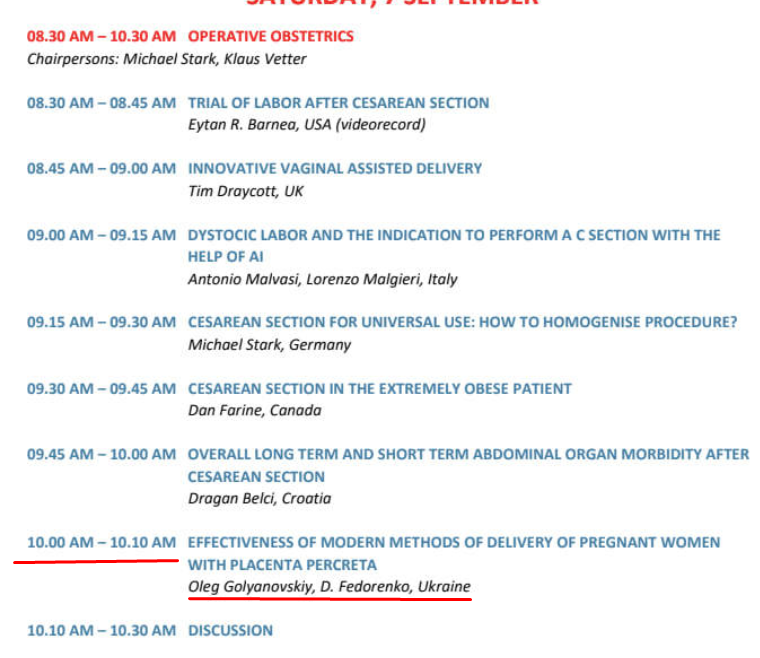On September 6-7, the annual online Congress of the New European Surgical Academy - The New European Surgical Academy (NESA) took place. This well-known and respected organization is known throughout the world as introducing innovative technologies into surgical practice and is led by renowned surgeon-scientists, Professors Michael Stark (President) and Carlo Di Renzo (Vice-President).
At the congress, the head of the department, professor Oleg Golyanovskyi, and graduate student Dmytro Fedorenko presented their report on the topic "Effectiveness of modern methods of delivery of pregnant women with Placenta percreta 3b and 3c". The researchers' attention was focused on the delivery of pregnant women with an abnormally invasive placenta, according to the FIGO (International Federation of Gynecology and Obstetrics) classification as Placenta percreta 3b and 3c, which is considered to be the one that causes the greatest number of intra- and postoperative complications, primarily the development of massive bleeding.
In his report, Professor Golyanovsky emphasized the comparison of the effectiveness of two methods of delivery for pregnant women with this severe obstetric pathology: the first group with temporary balloon occlusion of the infrarenal section of the abdominal aorta; the second group with ligation of the internal iliac arteries after cesarean section and removal of the fetus before hysterectomy. According to the results of the study, the use of endovascular balloon occlusion of the abdominal aorta significantly reduces the likelihood of massive bleeding, the need for transfusion of blood products, damage to adjacent organs, and the time of surgical intervention.
The presentation of a professor of our University among the participants of the Congress in the section "Operative Obstetrics" aroused great interest. The President of NESA, Professor Shtark, emphasized the high level of the conducted research, the innovative approach to the delivery of pregnant women with an abnormally invasive placenta and the prevention of massive bleeding, noting the need for wider implementation of this technique in obstetric facilities with the participation of a multidisciplinary team of specialists (obstetricians-gynecologists, anesthesiologists, vascular surgeons, transfusionists, urologists), which will significantly reduce maternal morbidity and mortality rates.





